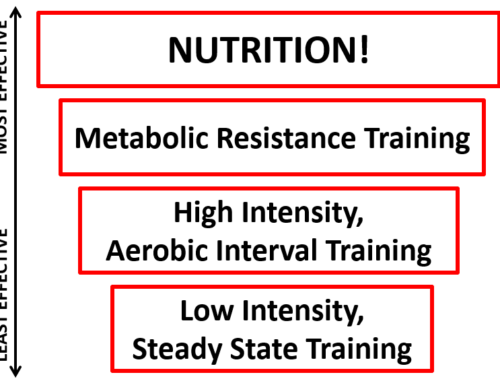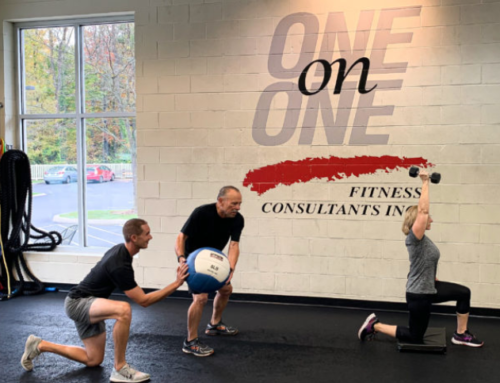
By Bruce Burke and Ryan Burke
Last Updated: 5/7/23
Let’s face it, whether you’re exercising at One on One or going about your activities of daily living, you do a lot of squatting! Accordingly, it is important to know how to do it right.
For many of us, sedentary lifestyles, muscular imbalances, and poor movement patterns can make squatting with proper technique quite challenging. Typical compensations include:
- Excessive forward lean of the torso
- Excessive low back arch
- Knees falling inward
- Toes rotating outward
These compensations create inefficient movement and can lead to various musculoskeletal dysfunctions including knee and lower back injuries.
Using proper technique is essential to safe and effective squatting. Here are some points to remember:
- Keep your weight slightly in your heels
- Lower your hips straight toward your heels
- Keep your knees in alignment with your ankles and hips throughout the movement (i.e. don’t let your knees cave in or bow out)
- Keep your spine parallel to your shins throughout the movement
- Keep a neutral spine and maintain “I”.
- Squat only as low as you can go while maintaining proper form. As always, you must respect your endpoints.
As you participate in activities of daily living, you might not be able to maintain “proper technique” at all times (think about getting in and out of your car). But when you’re in the gym working with loads greater than your body weight, you must strive for excellent form. This may mean limiting your range of motion or performing corrective exercises that will allow you to squat properly. You will be surprised how quickly you develop the strength and mobility necessary to safely perform this great exercise effectively.
For this week and moving forward, focus on your squatting technique. While there are many squat varieties, sticking to the above parameters will keep you safe and ensure you are getting the most out of every rep!




